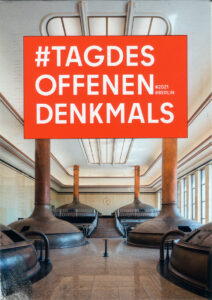About this time, on an every-other-year basis, I would be traveling to Berlin to further investigate the “Tag des offenen Denkmals”—the Day of Open Monuments (2021 program here). I see this event as a “global archive“—one of many I am engaged with, as also the documenta exhibitions in Germany since 1955, which I have written and just published on:
In defining “the global archive,” this essay refers, first of all, to the historical development of exhibitions in Germany that address a global horizon, a distinct cultural project since at least the Enlightenment. After 1945, modern art, which had been removed from public view by the Nazi state, was reintroduced as a project of reeducation as much as aesthetics. Documenta, beginning in 1955, exhibited modern and later artists in the destroyed buildings of the city of Kassel, and expanded its formal and cultural address to a global scale over its fifty-year history. Documenta itself became a kind of continuous archive of its own exhibition history, a mode of formal presentation that increasingly relied on the works it presented. Here I read in detail the archival strategies and form of dOCUMENTA 13, arguably a highpoint of this effort to archive globality as it emerges. “The Global Archive and the Future of Poetics,” Journal of Foreign Languages and Cultures 5, no. 1 (June 2021): 94–108 [pdf here].
The Day of Open Monuments started somewhat later, with support from the European Union, various nation states, and specific locales. Berlin itself counts as a global archive, and the Day becomes a shifting register of how to understand what that means. In Berlin, the Day opens and documents hundreds of sites, from sites of memory that can only be accessed on that Day; to Berlin’s capacious architectural history and its preservation projects; to studios of living and past artists (such as Hannah Höch’s garden); to cultural institutions, from galleries to museums. The Day addresses the historical questions documented by Topography of Terror and the Berlin Wall Memorial sites with lesser known, more horrifying or ambiguous or even playful and aesthetically pleasing ones. I document some of my excursions to the Day here; and continue to see it as a model, along with documenta, for the possibilities of “the archive as form,” at once historical, cultural, visual, and literary. For the “modern epic,” from The Cantos to Cahier d’un retour au pays natal, we may now looks toward the spatial horizon of a “global archive” that takes account of its open, multiple, transnational instances.
Links
Document 44: I Saw (Open Monuments)
Document 93: Global Ideation
Tag des offenen Denkmals/Day of Open Monuments 2021 program here













